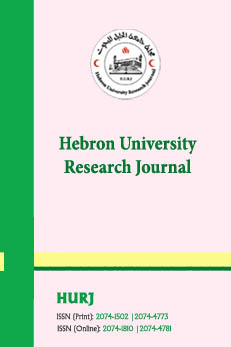Hebron University Research Journal (HURJ): A- (Natural Sciences)
Impacts of different water harvesting techniques on barley productivity under semi-arid conditions in Palestine
- Author: Ahmad Y. Safi, Prof. Ayed G. M. Salama
- ISSN: 2074-1510
- N°: 0
- Year: 2019
-
Link:
 Impacts of different water harvesting techniques on barley productivity under semi-arid conditions in Palestine
Impacts of different water harvesting techniques on barley productivity under semi-arid conditions in Palestine
Review
Abstract:
Water is the main limiting factor in rain-fed cropping systems under semi-arid environmental conditions, and because of the characteristics of rainfall in general, and low precipitation in particular, the productivity of plants is very low. This study was conducted at Al-Ubeidiya town in Bethlehem governorate to evaluate the effect of using water-harvesting techniques on the productivity of barley (Hordeum valgare L.) during two consecutive seasons. Three treatments were evaluated; namely: strip planting, ploughing-sowing-ploughing, and contour ridges, in addition to the control treatment (traditional planting method). Split-plot design was used to compare among treatments. The results showed the positive effects of water harvesting practices on barley productivity where a significant increase was obtained in grain and straw weight by 37% and 76% respectively, by using strip planting compared to the traditional cultivation (control). Grain and straw yield and plant height gave the best results in strip planting, followed by ploughing-sowing-ploughing, then the contour ridges, while the lowest values were in the traditional planting.
These results suggested that using simple and practical water harvesting techniques for barley cultivation under semi-arid conditions have the potential to increase barley grain and straw yield.





